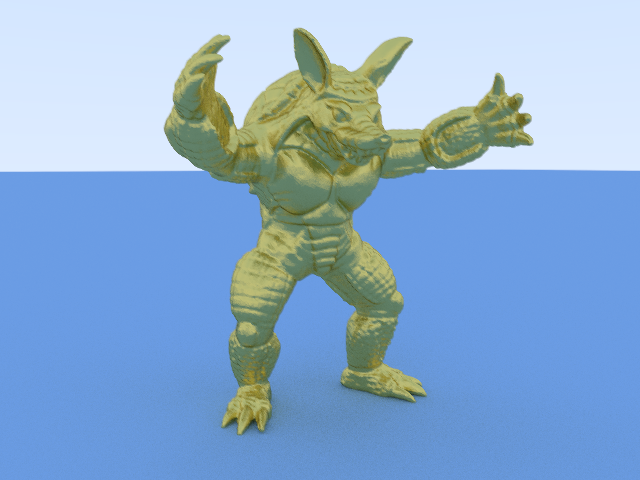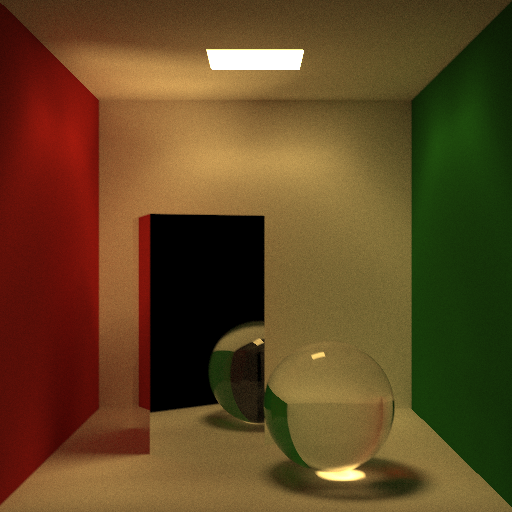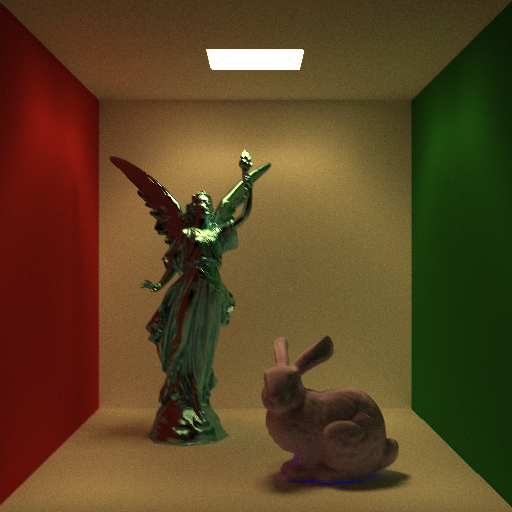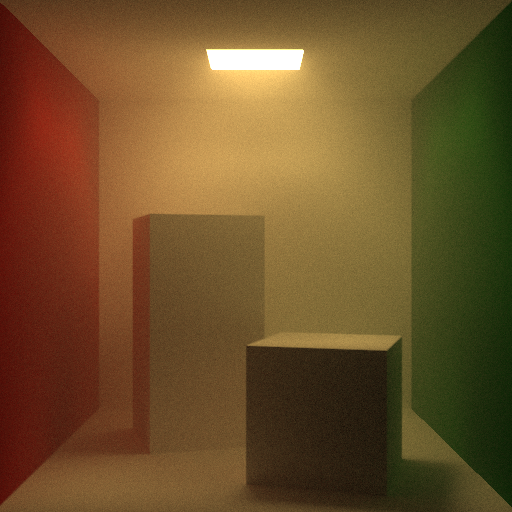Figured a raytracer would be a fun way to learn how to use Rust.
- Rust and Cargo. Just install
rustupfrom here and it'll install the whole Rust toolchain.
Run cargo build or cargo build --release if you just want to compile without running.
In src/main.rs there are currently two available scenes you can render:
- A basic scene with a diffuse sphere, a reflective sphere, a glass sphere, and a diffuse plane.
- A Cornell box.
- A thousand randomly generated spheres.
- A Stanford armadillo.
- Max Planck's head.
Just run cargo run --release [1|2|3|4|5] to render one of these.
(You can add animate at the end if you're rendering Scene 1 in particular to output a series of frames of an animated camera pivoting about the center of the scene to a subdirectory named frames/).
By default, this code will run on all available cores of your CPU.
You can go into src/main.rs and comment and uncomment particular lines of code (labelled appropriately) to change this.
Run cargo test to run some basic sanity unit tests.
The following images were produced (unless otherwise specified) using all 8 cores of my laptop's i7-8550U and a bounding volume hierarchy as an acceleration structure.
Below is an animation of a camera pivoting around a transparent ball with refractive index of 1.52, diffuse ball, reflective ball with roughness of 0.3, and diffuse plane. 120 frames of 640x480 images with 100 samples per pixel and a maximum of 50 bounces per ray took about 24 minutes (so ~12 seconds per frame):
Here's an image of 1,000 spheres, to show off how using an acceleration structure can dramatically improve performance (and a nifty depth-of-field blur). This took about 24 seconds to render at 640x480 pixels, 100 samples, as opposed to about 3.65 minutes with a basic linear search:
Here's a golden Stanford armadillo (model obtained courtesy of here), loaded from the .obj inside the models/ directory.
This model, which has 99,976 triangles, took about 19 seconds to render at 640x480, 100 samples:
Enclosing a volume in a translucent mesh can achieve a pretty serviceable subsurface scattering effect, as seen in Max Planck's head below (99,991 triangles). At 1,000 samples and 50 bounces, this (rather grainy) image took about 26 minutes to render:
And here's a few Cornell box renders, all of which are 512x512 pixels with 10,000 samples per pixels and a maximum of 50 bounces. I believe the pronounced lighting on the tops of the walls is because the emissive plane is positioned ever so slightly below the ceiling, and is emitting light on both of its sides.
The first two took ~1 hour and 10 minutes (as opposed to ~1 hour and 35 minutes without the BVH and just over 4 hours and 15 minutes on only one of those cores):
This one, with Lucy and the Stanford bunny (99,970 and 69,451 triangles, respectively), took around 2 hours and 30 minutes. However, to be fair, I was running multiple Chrome tabs as well as attending class over Zoom while rendering this, unlike the other images, so it probably would have been faster if left alone:
This one has a light volumetric fog sitting inside the original box. It took around 3 hours and 57 minutes. Volumetrics are, at the time of writing, rather computationally intensive, and unoptimized, but I was also watching things in Chrome, so perhaps this is not the most accurate timing:
TODO
- Ray Tracing in One Weekend
- Physically Based Rendering: From Theory to Implementation
- Cornell Box Data
- Common 3D Test Models
- Wavefront .obj file
- Quaternions and spatial rotation
- High school and college physics classes







